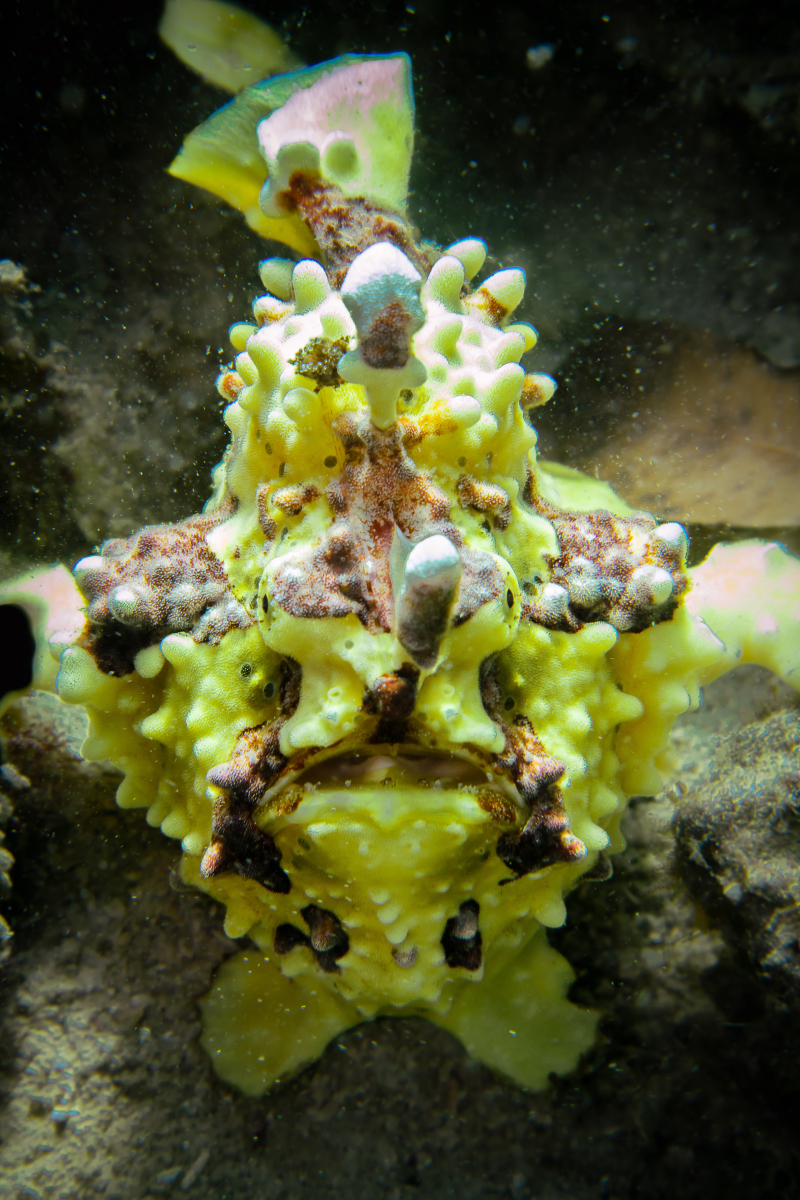Frogfish
The frogfish, a fascinating marine creature, is a standout member among common animals that start with the letter "F." Belonging to the family Antennariidae, frogfishes are known for their unique appearance, remarkable adaptations, and intriguing behavior, making them a captivating subject of study for marine enthusiasts and researchers alike.
Physically, frogfishes exhibit a distinct and quirky appearance, resembling a blend of a fish and a frog. Their bodies are stocky and covered in dermal spinules, giving them a warty or spiky texture. These protrusions aid in their camouflage, allowing them to mimic the textures of the surrounding coral or sponge environments where they often reside. Frogfishes come in a variety of colors and patterns, further enhancing their ability to blend seamlessly into their surroundings.
One of the most remarkable features of the frogfish is its illicium, a modified dorsal spine that extends forward like a lure. This appendage, often adorned with a lure resembling prey, is used to attract unsuspecting prey, such as small fish or crustaceans. Frogfishes patiently wait for their prey, remaining motionless and relying on their exceptional camouflage to ambush and capture their meals with a rapid strike.
Frogfishes are found in tropical and subtropical waters around the world, inhabiting coral reefs, rocky areas, and sandy bottoms. Their ability to adapt to diverse environments contributes to their widespread distribution across various oceanic regions.
Reproduction in frogfishes is intriguingly unique. The female frogfish produces gelatinous egg masses that are fertilized externally by the male. The male then guards the eggs until they hatch, ensuring the safety and survival of the offspring. This behavior is uncommon among marine fish and adds to the fascinating aspects of frogfish biology.
While frogfishes are not typically sought after for commercial purposes, they are highly valued in the marine aquarium trade due to their captivating appearance. However, their collection for the aquarium trade raises conservation concerns, as sustainable practices are essential to maintaining healthy populations in their natural habitats.
















